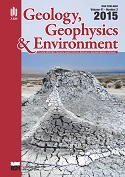Anthropogenic sediments from facultative lagoons of the Konstancin-Jeziorna sewage treatment facility and their usability for soil recultivation
DOI:
https://doi.org/10.7494/geol.2015.41.2.177Keywords:
anthropogenic soils, heavy metals, revitalizationAbstract
The sewage treatment facility of a paper mill at Konstancin-Jeziorna was opened to process industrial and domestic wastewater. After closure of that mill, the sewage treatment facility had to be rebuilt and modernized. Therefore, it was necessary to analyse the chemical and phase composition of the sediments from facultative lagoons used for biological treatment of wastewater. Eight samples of sediments were taken to identify a general phase composition by X-ray diffraction and ten to determine concentrations of selected main and trace elements with the use of ICP-AES and AMA methods.
The analyses showed that the sediments consisted of over 90% of mineral fraction, mainly kaolinite, calcite, and quartz and also neomorphic smithsonite. They contained low quantities of Hg, Cd, Co and Mo, and elevated concentrations of Zn, Ba, Mn and Sr. Comparisons of the obtained mean values with admissible concentrations of metals, as defined by Regulation of the Minister of Environment of 9 September 2002, showed that the mean concentrations of As, Sn, Co, Mo and Ni (and also of Hg and Cr in the southern lagoon) met quality standards for soils in areas under protection (group A). Mean concentrations of Pb (both lagoons), Ba, Cu, Cd (northern lagoon) as well as Cr and Hg (southern lagoon) in sediments are higher. However, they still meet standards for areas usable for agricultural and other purposes (group B). The highest concentrations were recorded for Zn, Cd, Cu and Ba in samples from the southern lagoon. These continued to be lower than all the limits acceptable for industrial areas.
Downloads
References
Bień J.B. & Wystalska K., 2011. Osady ściekowe: teoria i praktyka. Wydawnictwa Politechniki Częstochowskiej, Częstochowa.
Bojakowska I., Dobek P. & Wołkowicz S., 2012. Oddziaływanie na środowisko gruntowe stawów biologicznego oczyszczania ścieków. Górnictwo i Geologia, 7, 2, 59–69.
Dąbrowski J., 2011. Republishing the works of Włodzimierz Budka, a Polish paper historian. Paper History. Journal of International Association of Paper Historians, 15, 1, 16–28.
Drągowski A., 2010. Charakterystyka i klasyfikacja gruntów antropogenicznych. Przegląd Geologiczny, 58, 9/2, 868–872.
Gadomska D., Historia papierni w Jeziornie. Wirtualne Muzeum Konstancina, [on-line:] http://www.muzeum-konstancina.pl/47_fabryka_papieru_w_jeziornie [access: November 2014].
Rozporządzenie Ministra Środowiska z dnia 9 września 2002 r. w sprawie standardów jakości gleby oraz standardów jakości ziemi. Dz. U. nr 165, poz. 1359 [Journal of Law No. 165, item 1359].
Rozporządzenie Ministra Środowiska z dnia 27 września 2001 r. w sprawie katalogu odpadów. Dz. U. nr 112, poz. 1206 [Journal of Law No. 112, item 1206] annulled and replaced by Rozporządzenie Ministra Środowiska z dnia 9 grudnia 2014 r. w sprawie katalogu odpadów. Dz. U. 2014, poz. 1923 [Journal of Laws of 2014, item 1923].
Downloads
Published
Issue
Section
License
Authors have full copyright and property rights to their work. Their copyrights to store the work, duplicate it in printing (as well as in the form of a digital CD recording), to make it available in the digital form, on the Internet and putting into circulation multiplied copies of the work worldwide are unlimited.
The content of the journal is freely available according to the Creative Commons License Attribution 4.0 International (CC BY 4.0)










